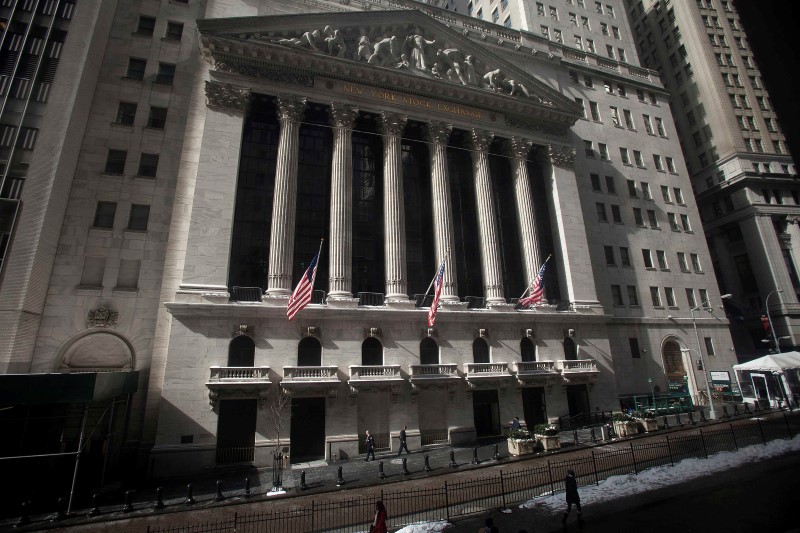(Bloomberg) -- The pipeline for new passive products is thriving. The world’s biggest credit ETF is hitting records. Even a notorious oil fund is rising from the near-dead.
As inflows soar and market dislocations vanish, America’s exchange-traded fund market is back to the boom times -- consigning to history two major disruptions of the pandemic crash.
The question is whether the lessons are being forgotten as fast, from the risks of marketing commodity products to retail investors to the price-discovery dangers in fixed income.
It’s been just two months since negative oil prices roiled commodity funds, and three since a historic schism opened up between bond ETFs and their underlying assets. Yet both are distant memories.
As Gary Stringer, chief investment officer at Stringer Asset Management, puts it: “It’s largely business back to normal” for the $4.3 trillion industry.
Less than a week ago, the Securities and Exchange Commission cleared the United States Oil Fund (NYSE:USO), ticker USO, to issue 1 billion new shares, paving the way for inflows to the world’s largest oil ETF after a nearly two-month freeze.
It’s a milestone moment for the fund that may help draw a line under its near-implosion, even as many of the questions raised by the episode remain unanswered.
The extraordinary steps taken by the ETF to protect itself from sub-zero crude prices in April shone a light on the risks posed by all funds investing in futures contracts, rather than in the assets underpinning those agreements. They also highlighted the danger of a huge fund like USO, with $5 billion in assets, operating in a relatively small market.
Read more: ETFs and the Danger of an Illiquidity Doom Loop
While the fund recorded outflows in its first trading days since the freeze ended, it has hardly been a torrent. Some $100 million has left the ETF, whose shares are up about 60% since their April low thanks to a recovery in crude.
“People’s memories are very short,” said David Pursell, the CEO of Core Alternative. “Greed is a driving force for all of this. If they see something moving quickly, they are apt to jump in.”
At a time when the surge of new retail investors is the talk of Wall Street, the worry is that history could repeat.
Right before the fund crashed, mom-and-pop investors had piled into USO to try to surf any oil price recovery. Both the SEC and the Commodity Futures Trading Commission are said to have opened probes into whether the risks of the fund were properly disclosed.
For many pros, the lesson of USO is simply buyer beware. Some argue it shows certain assets shouldn’t be in an ETF wrapper, while others tout the proposed re-naming of fund types being pursued by a group including BlackRock Inc (NYSE:BLK)., which they argue would help investors realize the varying risks.
“Not all exchange-traded funds are created equal,” said Ben Johnson, director of global ETF research at Morningstar Inc. “Other non-ETF exchange-traded products or commodity-based ETFs proved to be challenged in a number of regards, and I think it’s time to take a long, hard look at the ways in which risks associated with them can be better highlighted.”
The drama wasn’t limited to oil funds, however. The USO crisis came on the heels of a pronounced bout of turmoil in the bond market, when a rush to liquidate spurred the widest gap between fixed-income ETFs and their underlying assets in a decade.
As debt markets convulsed, the shares of the funds -- which were more liquid -- slumped, leaving them at deep discounts to the value of the bonds they invested in.
It was a moment many naysayers had been waiting for. Their argument had long been that the liquidity mismatch between ETFs and bonds would exacerbate a selloff and destabilize the wider market.
Some niche hedge funds positioned for precisely this type of dislocation, and their bets paid off as the funds tumbled. In their eyes, the plunge in ETF share prices was evidence that fixed-income funds give merely an illusion of liquidity.
It’s a view not shared by the bulk of industry practitioners. The way they see it, when the bond market froze the ETFs didn’t, meaning the funds actually became the best available vehicle of price discovery.
“You saw this huge fall-off in market liquidity, while the ETF market for fixed-income has picked up some of the slack,” said Dan Suzuki, the deputy chief investment officer at Richard Bernstein Advisors.
This takeaway -- that bond ETFs are now a vital liquidity tool rather than a threat -- alongside the Fed’s actions have made the funds more appealing than ever.
Fixed-income ETFs took in a record almost $30 billion in May, Bloomberg data show. The largest credit fund, BlackRock’s iShares iBoxx $ Investment Grade Corporate Bond ETF, hit an all-time high on Monday after the Fed confirmed its plans to buy more bonds.
Read more: Fixed-Income ETFs Survived Their First Crisis—Helped by the Fed
All of this has fed into the pipeline for new products. In the second quarter through Monday, 55 new U.S.-listed ETFs were introduced, compared with 45 in the first three months of the year, according to Bloomberg Intelligence. Debuts all-but stalled in March amid the worst of the coronavirus-driven selloff.
“That the ETF market functioned very well in a period of extreme stress if anything will only further accelerate adoption,” Johnson said.
©2020 Bloomberg L.P.
